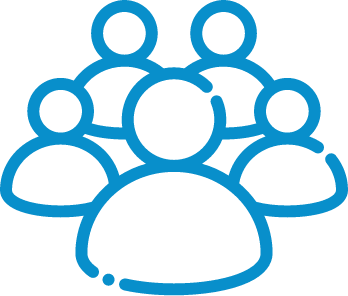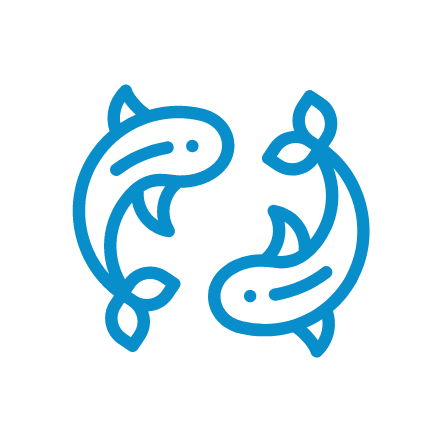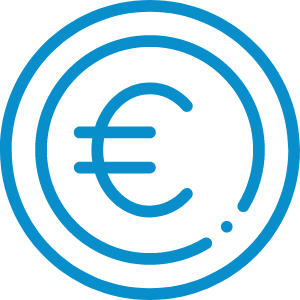IMPACT
Expected Outcomes
Recent research shows that the promotion of sustainability in seafood bears potential for product differentiation and therefore higher premiums and market shares. Recent publications analyzing consumer preferences and their willingness to pay (WTP) reveal that there is a very small consumer segment with a high WTP and a larger segment with a medium WTP for fish produced in compliance with sustainable production methods and from European origin.
Through the blockchain solution SEA2SEE develops, it promotes transparency of the value chain by providing the necessary information in a trusted and accessible way. The educational and awareness campaigns will increase consumer acceptance and achieve social innovation in the seafood sector.
Participatory workshops are part of the project’s robust stakeholders’ engagement strategy and are viewed as a first stage in the definition of the main barriers before achieving a fully transparent seafood value chain in Europe as well as end consumers’ acceptance of sustainable and low carbon footprint seafood.
Through validation exercises, various groups of stakeholders will be able to access open information on the products along the chain. Some of them will be invited to access the platform and register their processes. Government authorities will be invited to access and use for swift verification of processes and good practice.
The combination of population growth, urbanization and rising incomes is projected to increase global food demand compared with current needs by an estimated 50 % by 2030 and by 80–100 % by 2050. World fish consumption has been on the rise in recent decades, having almost doubled in the last 55 years. Given the global food landscape, the critical role of aquaculture in supplying food for Europe and beyond is undeniable.
Seafood consumers in the EU are increasingly looking for transparency and sustainability practices when it comes to making their food choices. Having a product that delivers this through the blockchain platform gives a competitive advantage to anyone who uses it. Ultimately, SEA2SEE contributes to a better environment for small and medium producers, active consumer engagement through a demand for high quality products and shaping a sustainable model.
Sea2See local demonstration case studies such as the octopus fishery in Algarve, Portugal will contribute to both short value chains with ecotourism integration increase. The “Guide to the Algarve traditional small-scale fishery” as well as “Check where your catch comes from” interactions with local restaurants will boost both social innovation and sustainable seafood short-value chains, directly contributing to local stakeholders’ empowerment and engagement. “The Sustainable Kitchen” tool would have sustainable seafood featured.
Impact
SEA2SEE Benefits Society

Better monitoring and data collection for stock assessment, resulting in improved management and conservation of living resources.
Better managed resources contributing to the sustainability of small-scale fisheries and the maintenance of traditional ways of life of small, coastal communities that are highly dependent on fisheries. Consumers will benefit from improved knowledge, empowering them for making healthier and more sustainable choices.


Greater sustainability means, for example, the use of more selective fishing gear, with a smaller negative impact. The emerging technologies adopted in Sea2See positively affect the fisheries, aquaculture and fresh food supply chain management (SCM) sector. Sea2See solution provides reliability from production to consumption. Transparency is the key factor setting the path for the recovery of the EU aquaculture sector in the aftermath of the COVID-19 crisis, and ensuring its longer-term sustainability and resilience. Introducing innovative SCM and monitoring solutions enables continuous sourcing of sustainable seafood products from either wild fisheries or aquaculture in ways that meet current seafood demands without compromising the availability of scarce resources for future generations.
Added value to the fishery products, which will in turn benefit producers. Increased consumer acceptance of adequately traced seafood will result in an surge in competitiveness of the EU fisheries and aquaculture sector by adopting the technology earlier. Additionally, Sea2See makes actors with sustainable seafood practices more visible to consumers which also gives them a competitive advantage. Sea2See brings opportunities for new businesses to benefit from the establishment of a next-generation traceability and sustainability labelling industry based on Web3.0 and blockchain technology.

Impact
SEA2SEE Benefits Society

Better monitoring and data collection for stock assessment, resulting in improved management and conservation of living resources.

Better managed resources contributing to the sustainability of small-scale fisheries and the maintenance of traditional ways of life of small, coastal communities that are highly dependent on fisheries. Consumers will benefit from improved knowledge, empowering them for making healthier and more sustainable choices.

Greater sustainability means, for example, the use of more selective fishing gear, with a smaller negative impact. The emerging technologies adopted in Sea2See positively affect the fisheries, aquaculture and fresh food supply chain management (SCM) sector. Sea2See solution provides reliability from production to consumption. Transparency is the key factor setting the path for the recovery of the EU aquaculture sector in the aftermath of the COVID-19 crisis, and ensuring its longer-term sustainability and resilience. Introducing innovative SCM and monitoring solutions enables continuous sourcing of sustainable seafood products from either wild fisheries or aquaculture in ways that meet current seafood demands without compromising the availability of scarce resources for future generations.

Added value to the fishery products, which will in turn benefit producers. Increased consumer acceptance of adequately traced seafood will result in an surge in competitiveness of the EU fisheries and aquaculture sector by adopting the technology earlier. Additionally, Sea2See makes actors with sustainable seafood practices more visible to consumers which also gives them a competitive advantage. Sea2See brings opportunities for new businesses to benefit from the establishment of a next-generation traceability and sustainability labelling industry based on Web3.0 and blockchain technology.
SEA2SEE contributions:
Sustainable and resilient aquaculture systems and sustainably produced food
High animal welfare standards and alternative sources of protein for food and feed, increasing seafood production and reducing environmental impact
Behavioural change towards responsible production, consumption and disposal of seafood leading to higher competitiveness and sustainability of the sector
European and worldwide active partnerships for a climate‑neutral, sustainable and productive blue economy
